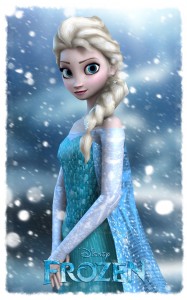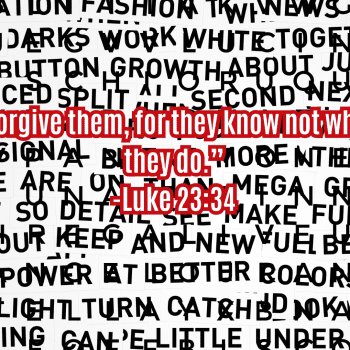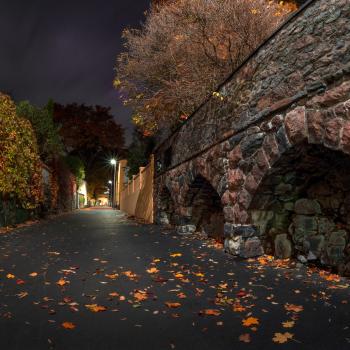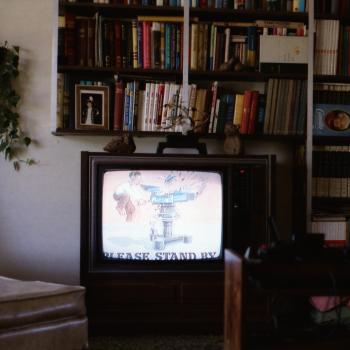Along with Kermit green, Barbie pink and—Lord have mercy—SpongeBob yellow, we can now officially add another color to the commercial childhood color spectrum:
Elsa blue.
Not the uninspiring medium light-blue of the golden-haired Disney Cinderella, the color of hard-sided Samsonite suitcases and redolent of 1950s animation, but a far more rarified shade, mixed with white and the tiniest drop of yellow-gold. A color that is just a step closer to Tiffany blue, and I bet you anything that this is not a coincidence.
In case you have no idea what I’m talking about, and have been preoccupied with your life of craft beers and reading Teodor Adorno, “Elsa blue” is the chief signifier and synecdoche of the 2014 animated film Frozen that recounts the story of two orphaned princesses in the Norwegian-inspired kingdom of Arendelle, the older of whom—the now-Queen Elsa—has the lethal and hidden power to create snow and ice.
When Elsa’s power almost freezes both her kingdom and her sister Anna (“Ahhhnna, not Anna,” my five-year-old daughter always has to tell me), Elsa flees to the mountains to be alone amid the Mad King Ludwig ice palace of her own creation with Idina Menzel’s theme song “Let It Go” playing as her celebration of finally being able to reveal her true self.
And then there’s that blue dress.
Take my word for it: It’s everywhere.
My daughter first started talking about the movie last spring. The film was already out, but the Elsa blue thunderstorm clouds were just gathering at the edge of the horizon. At the time of my daughter’s birthday in April, the Frozen party supplies were not yet in the stores around us; there were just hints of the deluge to come in the form of coloring books and stickers.
Now, seven months later, my daughter has been to at least three Frozen birthday parties, and there’s a fourth looming a bit closer to the winter solstice. To say nothing of the promise she has extracted from me about how her birthday party in April will be the biggest best Frozen party yet. “With all Frozen presents,” she informs me.
“You can’t ask people to give you specific presents,” I tell her. “That’s tacky. It’s like including registry info in a wedding invitation. You’re supposed to wait for people to ask.”
I’m not sure she quite got that.
It’s at these times that I wish I had been more successful in my efforts to be one of those homespun Waldorf-type parents who only gives her children handmade wooden toys.
The twist of these Frozen parties, apparently, is that the guests are encouraged to wear their own Frozen dresses. In theory, any princess dress is supposed to count, but in practice, everyone ends up coming as Elsa.
(My husband took my daughter to the last one of these, and came back singing a twist on the old Mojo Nixon song, “Elsa is everywhere, Elsa is everything.”)
The first one of these parties we attended, my daughter refused my suggestion that she wear “whatever princess dress she had,” and we had to visit not one, but two Targets to find one. And then it itched.
The truth is that I actually like the dress, which has long, sheer white sleeves that are just barely off the shoulder (derivative, I think, of the sheer sleeves made from ice-skating costume material that Vera Wang first popularized in wedding dresses of the early 1990s; Laurene Powell Jobs gown for example), an Empire waist, and a sheer cape that flows out from the shoulders.
Sleeves: Something that, these days, tend to be characteristic in evening wear only of pious Muslims and frum Orthodox Jews.
And the very existence of evening-dress sleeves—all the other dresses in the movie, it’s worth saying, also have long sleeves, a kind of Tyrolean-Edith Schaeffer aesthetic—bespeak of what I think is the significance of the Frozen madness that its marketers cleverly clued into: A desire for modesty, and to preserve innocence.
Much has been made both in feminist and traditional circles about the pink princess obsession of the past few years that has dominated toy marketing—feminists arguing that the color infantilizes girls and denies them agency, and a variety of critics across the spectrum claiming that the princess phenom merely sets young women up to be obsessed with “hotness” later, to be docile and compliant sexual partners, mere adjuncts to their brash “princes.”
Well, not Frozen. It’s significant, I think, that the predominant color of the film is one that, unlike pink, could never be considered indicative of the flush of sexual excitement, of blood-swollen pudenda (and in fact, it’s the opposite!).
Much has also been made of the film’s apparent routing of fairy-tale conventions: Queen Elsa scorns her sister’s love-at-first-sight romance with the snooty, visiting Prince Hans (who turns out to be a real bad guy), and the great act of sacrificial love is of one sister for the other. Princess Anna ends up companionably falling in love with mountain man Kristoff—this kindly, lumbering good guy is, in fact, about the only pink thing in the movie.
But the signal image of the film is of Elsa, unleashing her power under her own recognizance, her elaborate ice palace an objective correlative of her inner spiritual life.
A girl: innocent, empowered, and alone. An image of self-containment for which many of our daughters might be longing.
A native of Yazoo City, Mississippi, Caroline Langston is a convert to the Eastern Orthodox Church. She is a widely published writer and essayist, a winner of the Pushcart Prize, and a commentator for NPR’s “All Things Considered.”
















